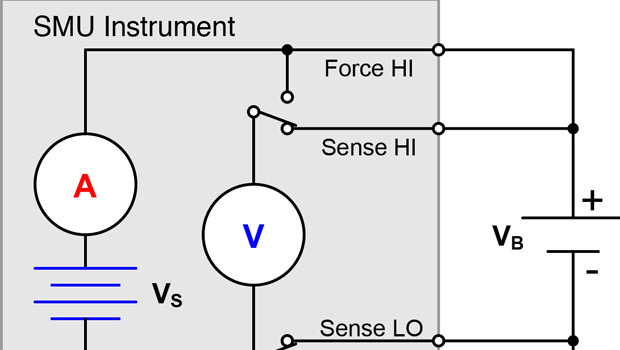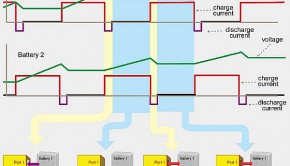Sourcing and Measuring Battery Cycles from One Box
Rechargeable batteries are commonly characterised using charge/discharge cycling, which provides useful information on internal chemistry, capacity, usable cycles, and lifetime.
In production, this technique is often used to verify if a battery meets specifications and isn’t defective. A charge/discharge test setup often includes a programmable power supply, an electronic load, a voltmeter, and an ammeter.
However, battery testing can be simplified by using a single source measure unit (SMU) instrument, which can source/sink current and measure voltage and current.
Rates for constant current charging and discharging are defined in terms of the battery’s capacity, i.e., the amount of charge it can store.
Capacity, specified in milliampere-hours (mAH) available, is expressed in terms of discharge or load current. The C-rate is the rate at which the discharge current will discharge the entire battery in one hour.
For example, a 1000mAH-rated battery will output 1000mA for one hour if discharged at 1C. If a 500mAH cell is discharged at 50mA, then it is discharged at one-tenth the C-rate (0.1C); therefore, it can source 50mA for ten hours.
For both charge and discharge cycles, an SMU instrument sources voltage and measures current. A battery is usually charged with a constant current using a voltage source set to the battery’s voltage rating; the desired charging current is set as the current limit.
Full article by Richard Wilson, Electronics Weekly News





























































































































































